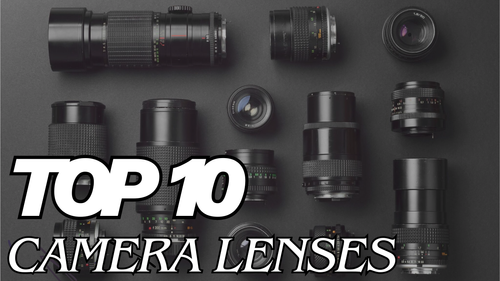Ad
Expert Reviews
A Journey through the History of Watches

Watches have transcended their functional purpose, becoming symbols of artistry, innovation, and human ingenuity. From humble beginnings as sundials to today's intricate timepieces, the history of watches is a captivating narrative that spans centuries and civilizations. In this comprehensive article, we embark on a journey through time, tracing the evolution of watches from ancient to modern times.
How have watches evolved with time?
Ancient Origins: Sun and Sand as Timekeepers
The origins of timekeeping can be traced back to ancient civilizations that relied on celestial bodies and natural phenomena. Early methods included observing the movement of the sun's shadow on sundials and measuring time through water clocks, or clepsydrae. These rudimentary timekeepers were the precursors to the mechanical wonders we have today.
Medieval Marvels: The Emergence of Mechanical Clocks
The transition from sundials to mechanical timekeeping marked a significant milestone in horological history. In the 13th century, mechanical clocks emerged in European monasteries, driven by weights and gears. These clocks, often placed in church towers, marked the hours with bells, enabling more precise timekeeping for communities.
Pocket Watches: A Renaissance in Timekeeping
The 16th century witnessed the rise of portable timekeeping with the advent of pocket watches. These early timepieces, worn as pendants or carried in pockets, featured ornate cases and delicate movements. The intricate craftsmanship of pocket watches transformed them into symbols of status and elegance among the aristocracy.
18th Century: The Birth of Wristwatches
The 18th century brought about a shift in timekeeping convenience with the emergence of wristwatches. Originally designed for women as decorative accessories, wristwatches gained popularity among men during military campaigns, offering a practical alternative to pocket watches.
Industrial Revolution: Precision and Mass Production
The Industrial Revolution marked a turning point in watchmaking, introducing mechanized production techniques and standardized parts. The invention of interchangeable parts by Swiss watchmaker Breguet revolutionized the industry, making watches more affordable and accessible.
20th Century: The Rise of Modern Watchmaking
The 20th century witnessed remarkable advancements in watch technology and design. The introduction of wristwatches with self-winding mechanisms (automatic watches) and quartz crystal oscillators led to improved accuracy and convenience. The latter half of the century saw the proliferation of electronic and digital watches, culminating in the advent of smartwatches in the digital age.
Mechanical Renaissance: A Return to Craftsmanship
While digital and smartwatches surged in popularity, the late 20th and early 21st centuries also witnessed a renaissance in mechanical watchmaking. Enthusiasts and collectors rediscovered the charm of traditional mechanical movements, leading to the resurgence of interest in luxury mechanical watches.
21st Century: Fusion of Tradition and Innovation
The 21st century has brought about a harmonious coexistence of traditional watchmaking and modern technology. High-end mechanical watches continue to showcase intricate craftsmanship and artistic designs, while smartwatches seamlessly blend tech features like notifications, health tracking, and connectivity.
Also Read: Best Smart Watches Under 10,000
Also Read: Hardik Pandya Watch Collection
Also Read: Anant Ambani Watch Collection, Life and Net Worth
Also Read: Top 5 Automatic Watches Under 15000 in India
Also Read: 10 Best Watches Under 15000 in India 2023
Also Read: Which are the Best Atomic Wristwatches Available in India?
Also Read: Why do people still buy mechanical watches?
Also Read: 2023's Best Kinetic Watches
Conclusion:
The history of watches is a testament to humanity's relentless pursuit of precision, innovation, and beauty. From ancient sundials to contemporary smartwatches, the evolution of timekeepers mirrors the evolution of societies, cultures, and technology.
Watches have transcended their utilitarian purpose to become expressions of personal style, status, and craftsmanship. As we continue into the future, the legacy of watches will undoubtedly remain a vital thread woven into the fabric of human history.
Follow Us:
Ad
Recent News

Realme Narzo 90x 5G Goes on Sale in India Today
23-Dec-2025 06:59 AM

Samsung Unveils Exynos 2600, the World's First 2 nm Chipset
19-Dec-2025 06:30 AM

Google Unveils Gemini 3 Flash: Faster AI That Outshines Pro Model
18-Dec-2025 09:55 AM

Motorola Edge 70 Launches in India: Slim Design, Strong Battery
15-Dec-2025 07:14 AM

Jio’s Happy New Year 2026 Plans: Get Unlimited 5G and more
15-Dec-2025 06:38 AM
Reviews & Guides
View All

Nothing Phone 3a Community Edition First Impressions: A Fresh Take on Budget Smartphones

Realme P4x 5G Review: Budget-Friendly Beast with Epic Battery Life

Haier M92 (H65M92FUX) vs Sony Bravia 7 (K-65XR70): Head-to-Head 65-Inch Mini LED TV Battle for 2025

Haier M92 (H65M92FUX) vs Samsung QN90F (65QN90FAFXZA): 2025 Mini-LED TV Battle for Your Living Room

Why doesn’t Apple reveal the iPhone battery in advertisements?

Top 10 camera lenses you should Own in 2025

Donald Trump Watch Collection: Timeless Luxury on the Wrist

Best Smartphones Under 30,000 in 2025
Ad
Latest Mobiles In India
Ad
Ad












